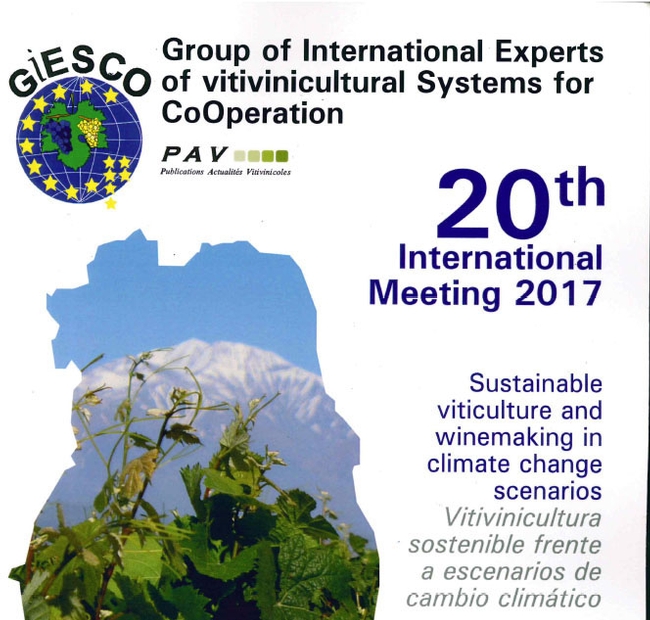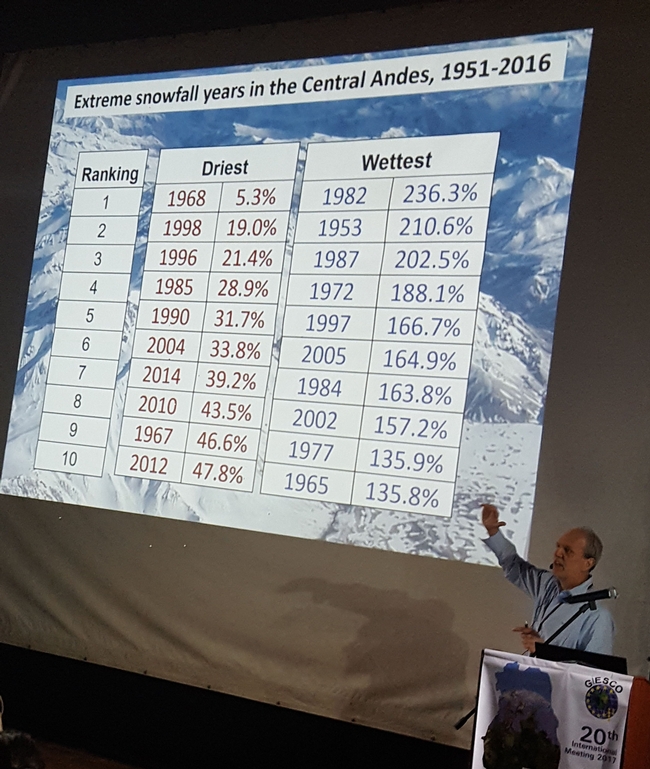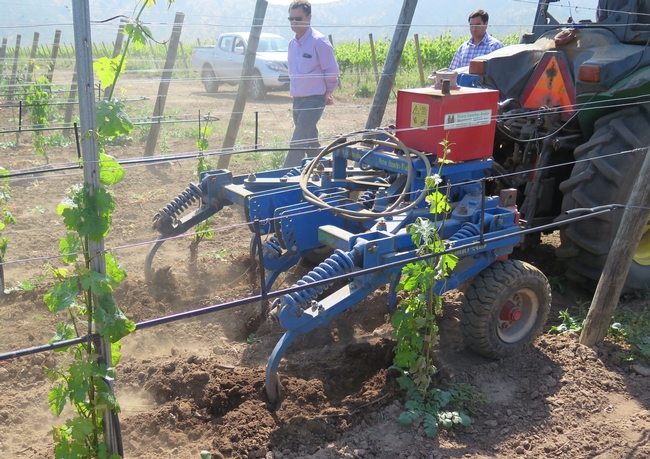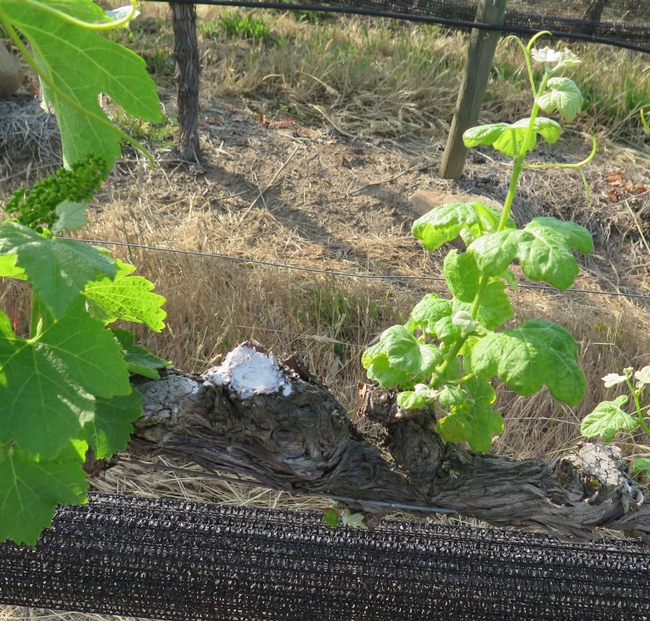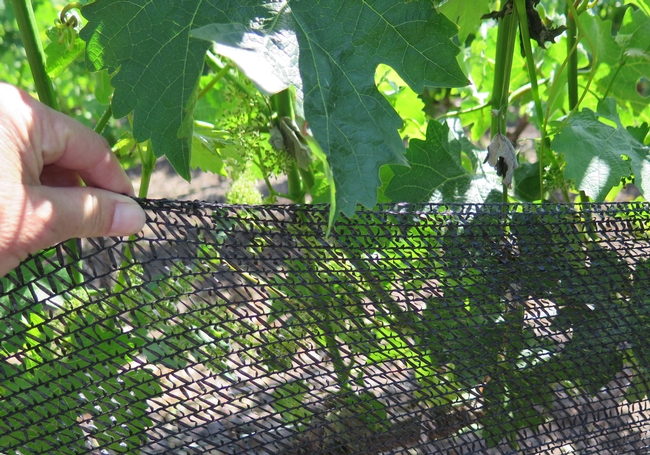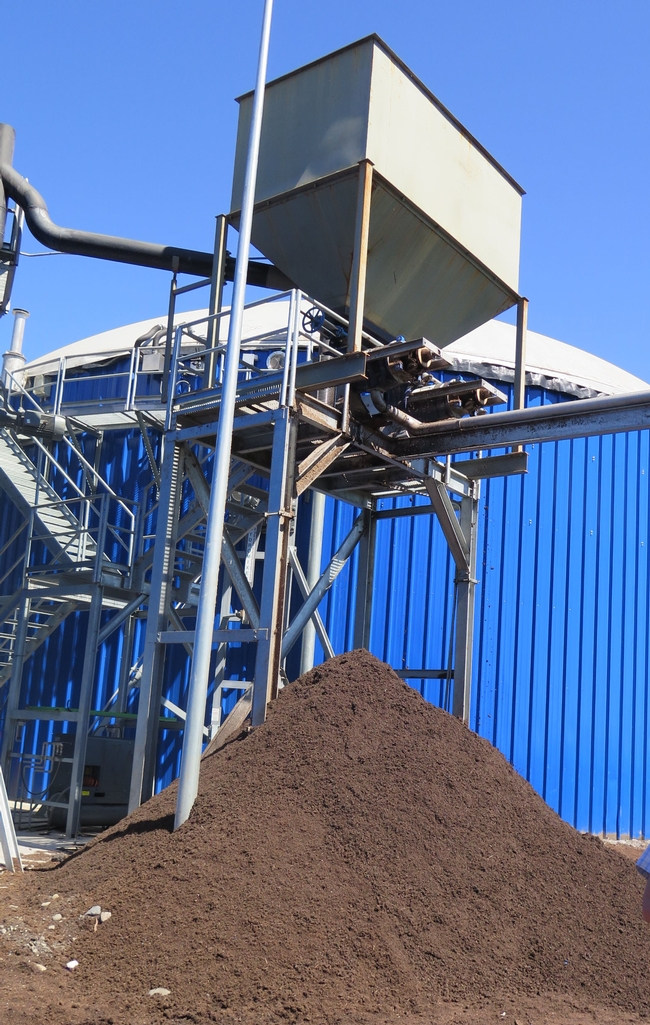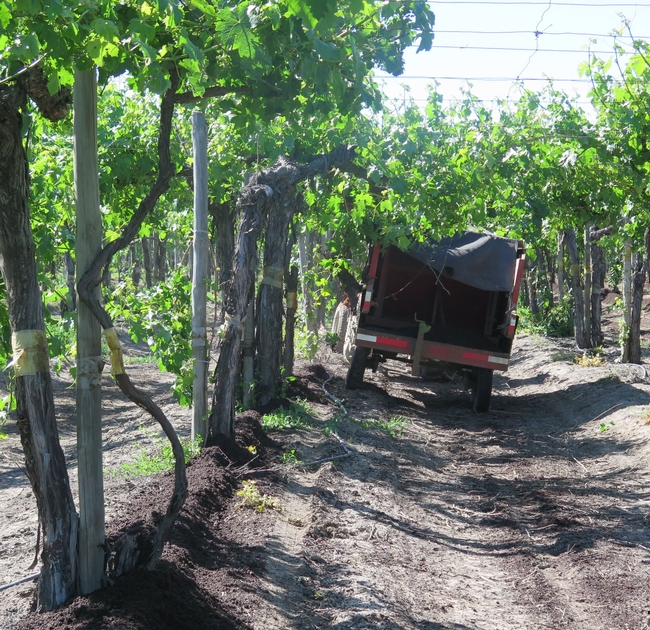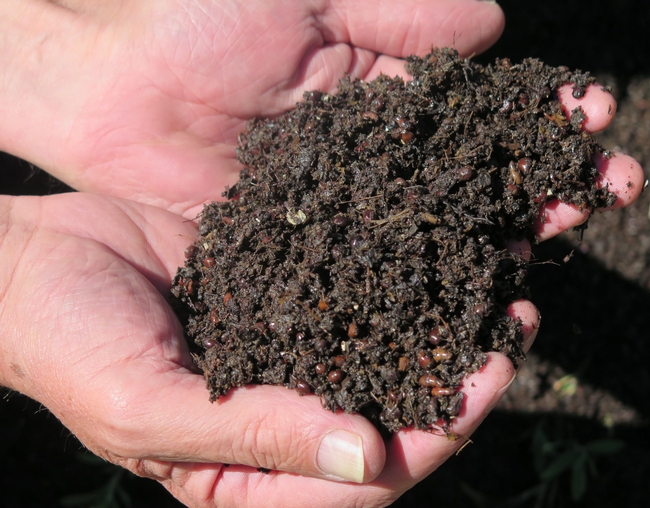Happy New Year 2018 Fodder Folks! 2017 ended for me with a trip to South America, in order to participate in the 20th International GiESCO (Group of International Experts of vitivinicultural Systems for CoOperation) meeting held in Mendoza, Argentina, and to do some vineyard field touring with my UCCE colleagues in Chile. GiESCO (a funny acronym, I know) provides a wealth of information, and it is especially interesting to realize that winegrowers and extension researchers all over the world are facing many of the same problems- including drought imposed by higher Richardo Villalba presents Andean climate stats at GiESCO.
In Chile, growers are looking to sustainable farming methods.The "intercepa" weed cultivator.
Pruning wounds are treated with fungicide protectants to prevent the spread of canker disease.
Clusters are routinely netted for sun protection.
Perhaps the most progressive thing that VSP wine group is doing to prepare for a sustainable future is communicating openly about their problems and solutions-because planning for a sustainable future doesn't happen in a bubble. Turns out it really is a small world, after all.
